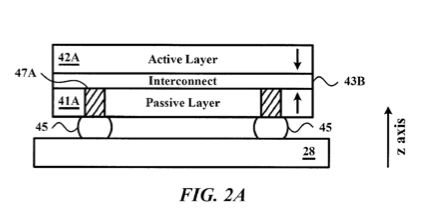here it is – arctic sand III
Here it is, indeed. The first patent application assigned to Arctic Sand Technologies was published as US 2013/0094157 (‘157) on April 18th.
It is now possible to take a direct look at aspects of their power converter technology which they are seeking to protect.
setting the stage
Before jumping feet first into the technology disclosed in ’157 it is worth thinking about the duality in many electronic devices. The final performance of a given device is a function of both the circuit design i.e. how the electrical elements or building blocks are wired together and the structure, including the geometries, materials and fabrication processes used to build these elements. Now, we know from past coverage that Arctic Sand is focusing on improving the efficiency of power converters. One might therefore anticipate IP in either circuit design or structure, or both.
’157
The ‘157 publication certainly seems to fall on the side of structure, with the first sign of this coming in The Background. Generally, we are told a power converter will have active circuit components as may be found in an integrated circuit and passive components, such as capacitors. Paragraphs [0010]-[0012] describe structures where these passive components are integrated within a CMOS process, generally amongst upper metal levels, away from any active components. Such a structure boasts and integrated structure, but does not provide the best passive components. In another structure the discrete components are separate from the integrated circuit having the active components. In this case the level of integration is lowered, but the passives will provide better performance. So which way do you go? The integrated approach reduces, for example, wiring lengths and I/O pin count while the use of discrete components provides better passive performance.
Now to move to the Detailed Description where aspects of the invention are disclosed. A structure for a power converter according to the disclosure is presented in Figure 2A, which is reproduced below. This Figure is introduced between paragraphs [0066]- [0068]. The disclosed structure has separate active and passive device layers, 42A and 41A, respectively. It is disclosed that these layers would be fabricated in different processes to better optimize the performance of the passive components in particular. Electrical communication between the layers is provided by interconnect structure 43B. It is later disclosed that devices within layers 41A and 42A can be aligned above one another as much as possible to reduce interconnect length. The overall structure further includes through vias 47A for further interconnections and connection to solder bumps 45, which in turn are connected to electrical interface 28.

what about ’541?
In the last article on Arctic Sand the ‘541 patent (US 8,212,541) came to the surface and was thought to be possibly relevant. Do we know more now? The ’541 patent lists David Giulianno, who is the sole inventor listed here, on the ‘157 publication, as an inventor. Second, the application (2009/0278520) from which the ‘541 patent issued is identified in paragraph [008] of the Background and is incorporated by reference into ‘157. More could be said here, but that is for another forum.
To conclude, the ‘157 publication appears to focus generally on the structure of power converters, and more particularly discloses an integrated structure that implements separately fabricated active and passive components.


